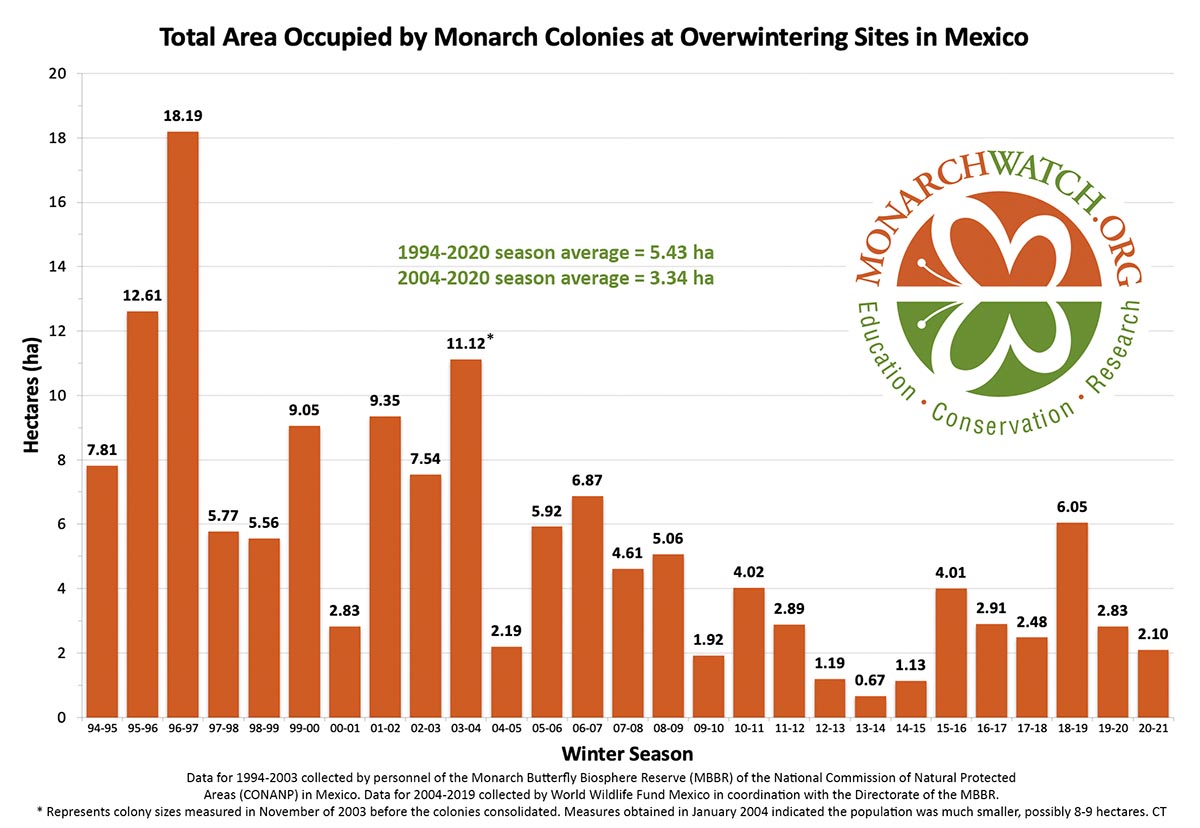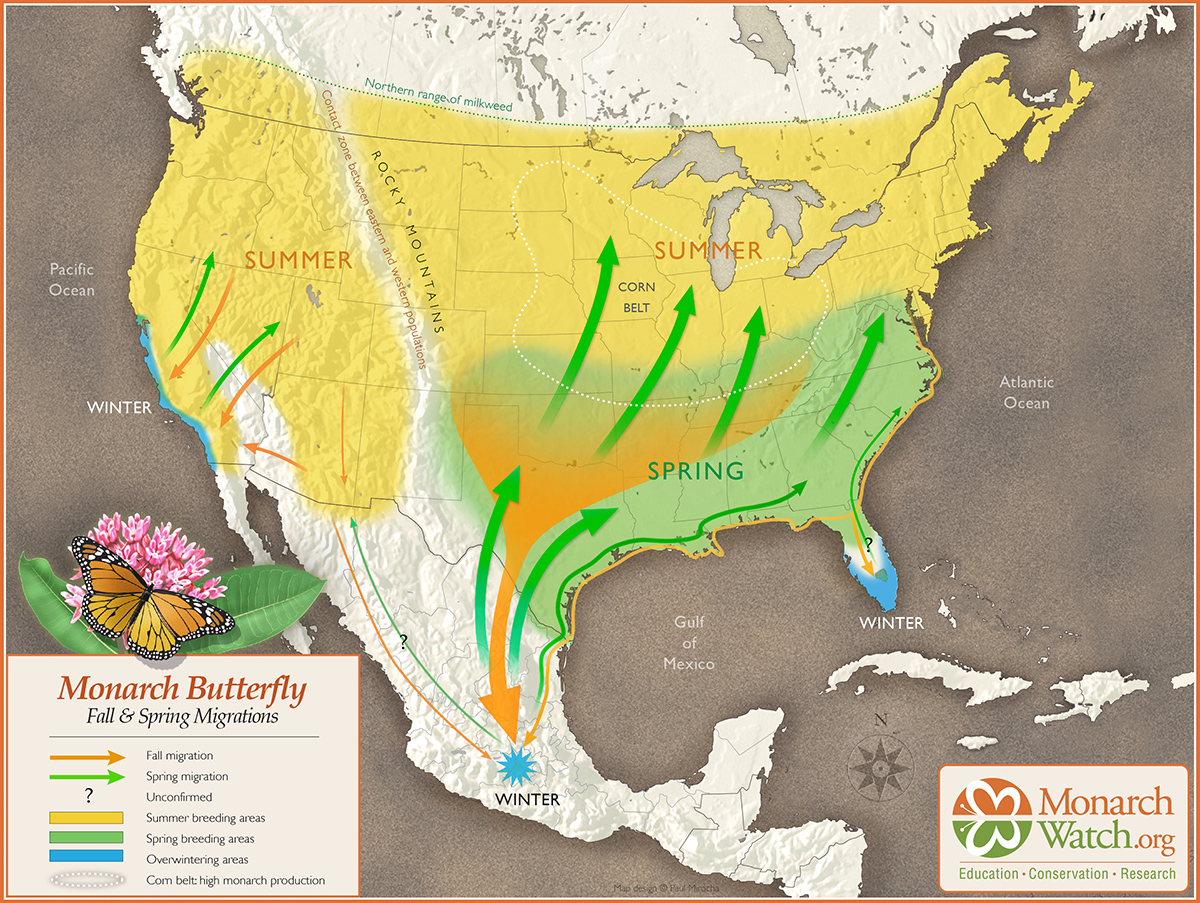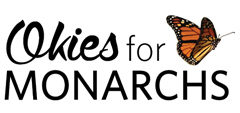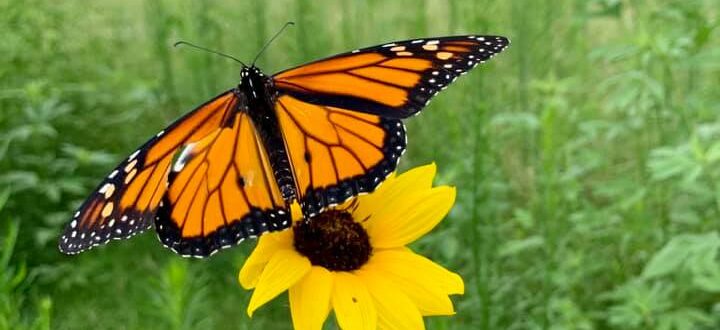Currently, the monarch butterfly is not listed as an endangered species. It was considered in 2020 (see story below) and will be reconsidered in December 2024.
Message from the U.S. Fish and Wildlife Service: March 18, 2024
The U.S. Fish and Wildlife Service has reached a new agreement on the timeline for making an Endangered Species Act listing determination on the monarch butterfly. We are now planning to submit to the Federal Register for publication either a warranted or not warranted finding for the monarch butterfly by no later than December 4, 2024. This extension will give our agency sufficient time to consider all the best available scientific and commercial data pertaining to the species and to go through any necessary levels of internal review.
December 16, 2020
USFWS Finds Monarch Butterfly Warranted but Precluded for Endangered Species Act Listing
Yesterday, the U.S. Fish and Wildlife Service (USFWS) announced a “warranted but precluded” decision for the monarch butterfly Endangered Species Act listing. This designation means the monarch butterfly is now a candidate species and the USFWS will review its status each year while working on species of higher priority listing. Currently, listing actions for 161 species on the workplan (64%) are a higher priority than the monarch. The USFWS is adding the monarch butterfly to the candidate list and assigning it a listing priority number of eight. This priority number indicates the magnitude of threats is moderate and those threats are imminent.
“Okies for Monarchs is committed to continuing its conservation efforts to help save the monarch butterfly. In 2018, we launched a Statewide Monarch Action Plan in collaboration with more than 40 organizations. Through this process, our partners, and many other stakeholders, have taken action to increase pollinator habitat in our great state. From schools to farms and roadsides to lawns, there is a role for everyone in monarch conservation,” stated Katie Hawk, Okies for Monarchs outreach lead and Marketing Director for The Nature Conservancy of Oklahoma.
 The USFWS defines an endangered species as “in danger of extinction throughout all or a significant portion of its range” and a threatened species as “likely to become endangered in the foreseeable future throughout all or a significant portion of its range.”
The USFWS defines an endangered species as “in danger of extinction throughout all or a significant portion of its range” and a threatened species as “likely to become endangered in the foreseeable future throughout all or a significant portion of its range.”
“What does this mean? Now what? Those are common questions we’re receiving regarding the proposed ESA listing. Based on listing priorities and workload, the USFWS intends to propose listing the monarch in 2024 if listing is still warranted at that time. In the meantime, it is our hope that this finding will amplify the critical need for more pollinator habitat and inspire more Oklahomans to take action,” stated Hawk.
In the last decade, due to habitat loss and other factors, monarch butterfly populations have plummeted at an alarming rate. The entire North America monarch population is divided into eastern and western populations. USFWS bases its decisions on the entire North American population. The Eastern monarch population is measured by the total forest area occupied by overwintering monarch colonies in Mexico. Eleven (11) colonies were located in the 2019-20 winter season with a total area of 2.83 hectares, a 53.22% decrease from the previous season. The Western monarch population is measured by counting individual butterflies at overwintering sites in California. Projections from 2020 data received, so far, are that the total count will be less than 2,000 Western monarchs. This is a 99.9% decline since the 1980s.
This rapid decline has spurred national conservation collaboration efforts, with over 16 states (including Oklahoma) developing statewide action plans, for conserving habitat in their state for this amazing migratory butterfly.
 “Oklahoma serves an important role in the survival of the monarch butterfly. We are centrally located in the monarch migratory path. From Enid to Durant and Elk City to Tahlequah, now is the time (before it’s too late) for us Oklahomans to get our hands dirty and help save the monarchs. We invite everyone to join us to plant the path for monarchs in Oklahoma!” stated Hawk.
“Oklahoma serves an important role in the survival of the monarch butterfly. We are centrally located in the monarch migratory path. From Enid to Durant and Elk City to Tahlequah, now is the time (before it’s too late) for us Oklahomans to get our hands dirty and help save the monarchs. We invite everyone to join us to plant the path for monarchs in Oklahoma!” stated Hawk.

